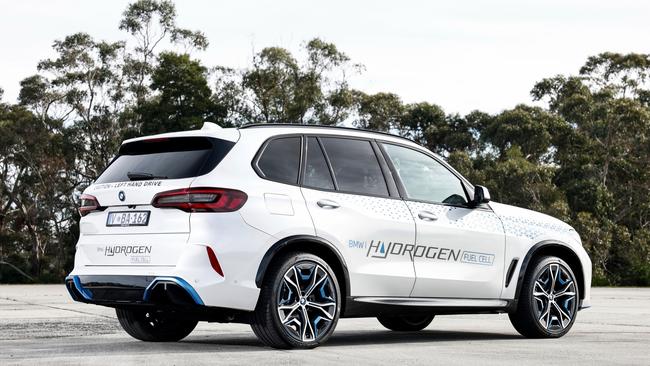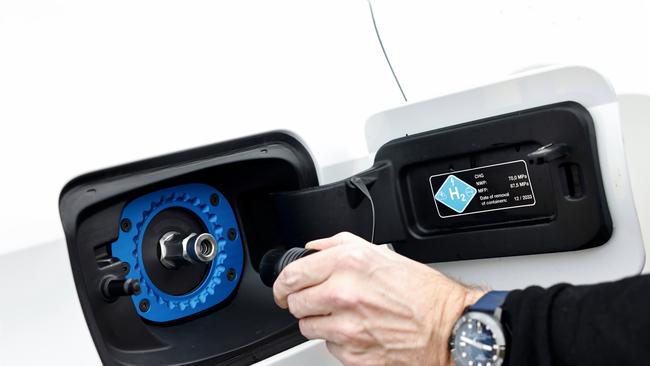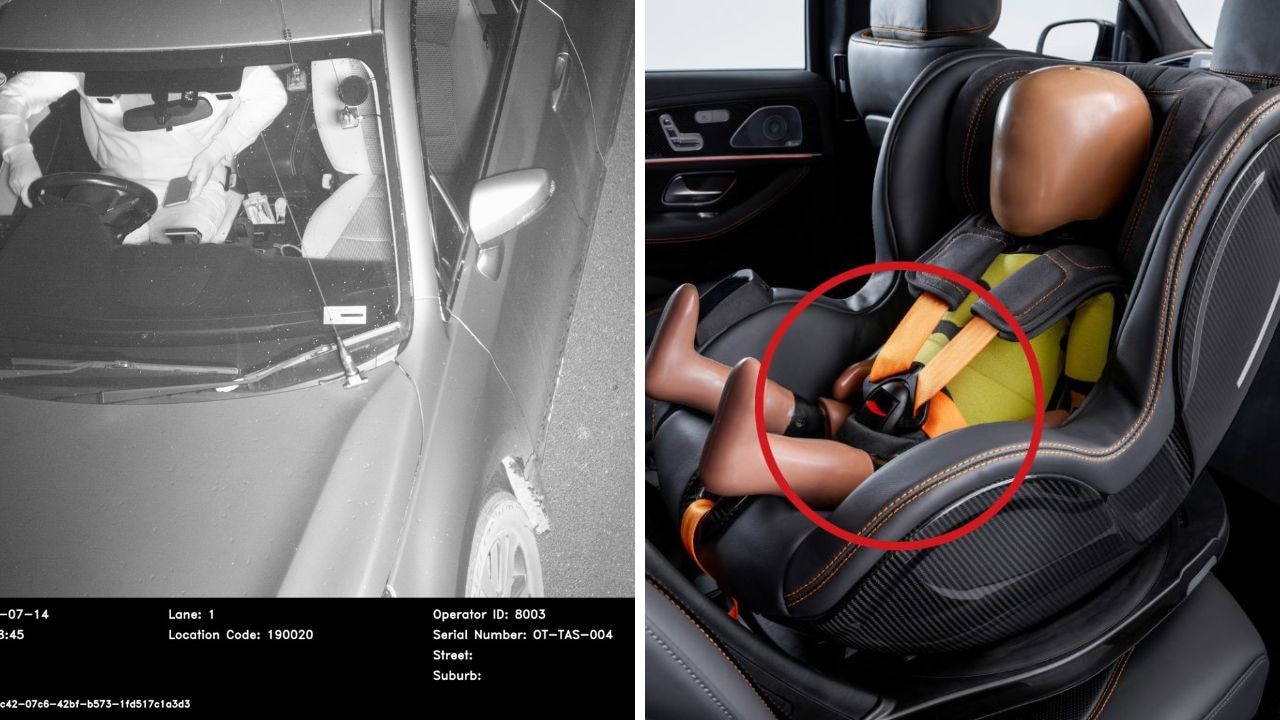BMW iX5 Hydrogen: fuel-cell wagon under consideration for sale
Plug-in electric cars represent the immediate future of zero-emission motoring, but many carmakers believe there are other options.
HiTech
Don't miss out on the headlines from HiTech. Followed categories will be added to My News.
Apart from the funky stickers and blue highlights the BMW iX5 looks like any other large SUV.
Yet it drives like an EV and never needs to be recharged.
The iX5 Hydrogen is one of dozens of pilot vehicles dotted around the world to test the technology with a view to one day bringing fuel-cell EVs to market.
The German giant, known for its luxury and performance vehicles, will decide within months whether to make hydrogen part of its future energy mix.
Our brief drive of two left-hand drive iX5s took part on the old Holden proving ground.
As with the Hyundai Nexo and Toyota Mirai – two hydrogen-propelled machines currently leased in tiny numbers in Australia – the iX5 drives just like an EV.
Press the throttle on the large wagon and it builds pace purposefully, an electric motor quietly but swiftly propelling the 2.4-tonne five-door up to speed.

Paddles on the steering wheel that previously changed gears now adjust the level of braking regeneration when you lift off the throttle.
The digital instrument cluster looks like any other, save for the fuel use readout that exchanges litres per 100km for kilograms per 100km. While hydrogen is stored as a gas, the amount is measured in kilograms and the iX5 holds six kilograms in two tanks, one running the length of the centre of the car and a shorter one forming a T at the rear of the car.
The hydrogen fuel cell under the bonnet is supplied by Toyota – the two collaborate on fuel-cell development – although BMW has tweaked it to deliver more power in line with the size of the vehicle and the performance positioning of the brand.

There’s also a small battery pack that can provide power instantly while the fuel cell turns hydrogen into electricity.
The battery also helps boost the overall outputs, adding 170kW to the 125kW on offer from the fuel cell for a combined 295kW output.
Despite weighing 220kg more than a diesel-powered X5 30d, the iX5 Hydrogen scampers to 100km/h in less than six seconds. It’s clean and smooth, with the near-instant response of an EV.
Select a sci-fi soundtrack – the same one used in BMW EVs – and the car will emit a futuristic aural accompaniment to add some drama.

The iX5 also scurries around corners with the same confidence of any other X5, its hulking 22-inch tyres clawing the bitumen and providing the confidence to push on.
A big part of the appeal with the iX5 is its normality. It looks and feels like any other X5.
And the real kicker in an EV era of range anxiety and charging hassles: the iX5 can be topped up in a few minutes.
That is, of course, if you can find a hydrogen refuelling station.
That’s not easy.
There are only a handful set up for topping up hydrogen-powered cars anywhere in the country. BMW filled these two cars up from the Toyota facility in Altona, at which point they had a claimed 504km of range.

The biggest challenge a hydrogen fuel cell BMW faces is cost.
Fuel-cell development is in its infancy compared with battery electric vehicles, but the general manager of the hydrogen project for the BMW Group, Dr Juergen Guldner, believes price parity with EVs can be achieved.
He also argues hydrogen can play a valuable role in countries such as Australia.
Whereas high-powered fast chargers for EVs can be expensive, Guldner says it’s a lot easier with hydrogen – with all the caveats of sourcing affordable hydrogen and distributing it around the country.

“Australia has all the ingredients,” he says. “If the Australian strategy embraces having battery electric cars and hydrogen cars as a combination rather than trying to do everything with battery electric … it could become a lead market.”
Even if BMW pushes the button on a hydrogen production car project later this year, Guldner admits it’ll be years – likely the end of the decade – before anything appears in dealerships.
BMW iX5 Hydrogen
PRICE: Not available, but it won’t be cheap!
SAFETY: Eight airbags, auto emergency braking, blind spot monitoring, lane departure warning, lane keep assist, rear cross traffic alert, rear auto braking, driver monitoring, exit warning, speed sign recognition
POWER: Single electric motor, 295kW
RANGE: 504km
SPARE: Repair kit
BOOT: 650 litres
VERDICT
Three and a half stars
EV driving nous with fast refuelling times holds real appeal – but hydrogen fuel cell cars such as the iX5 face two big hurdles: pricing and infrastructure.
Originally published as BMW iX5 Hydrogen: fuel-cell wagon under consideration for sale


